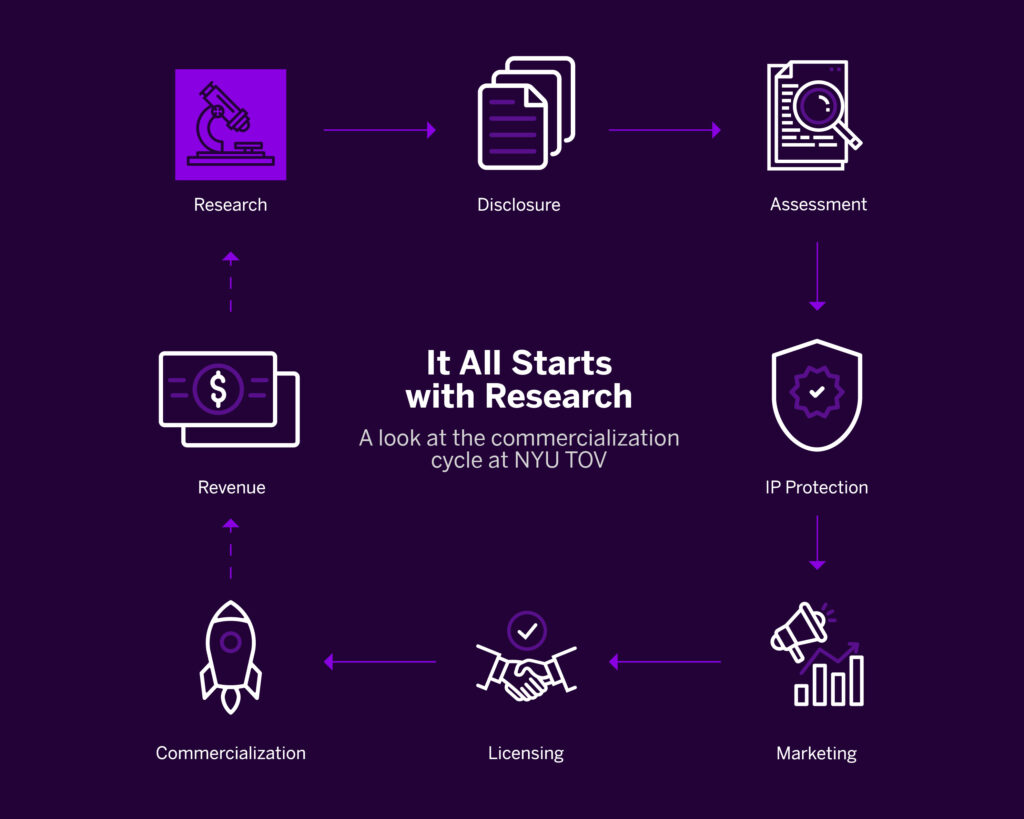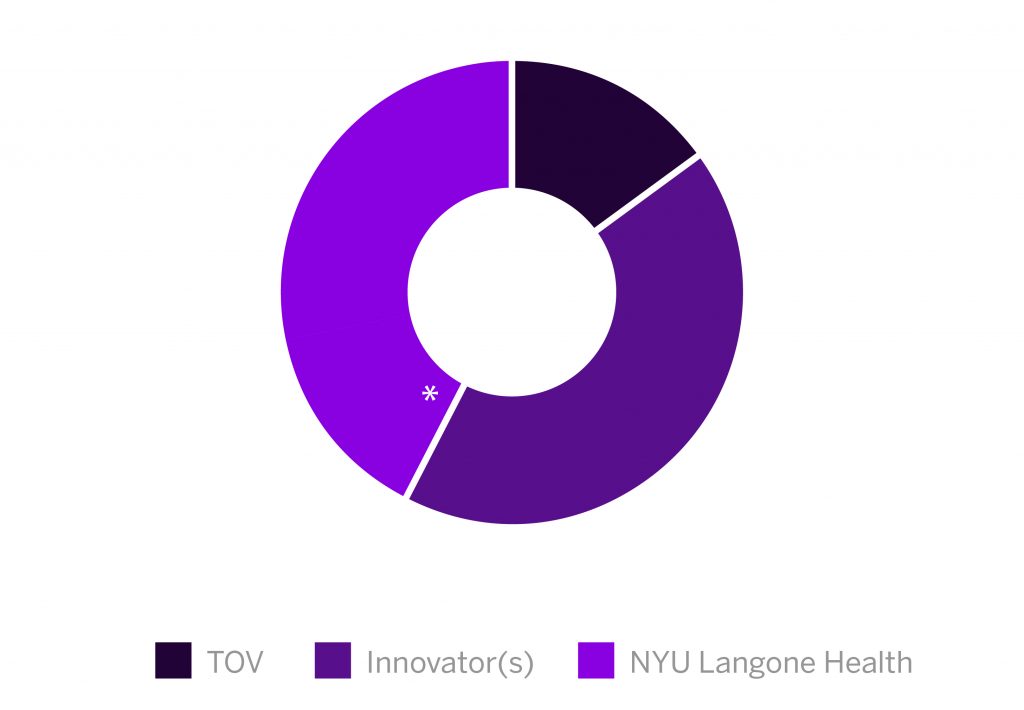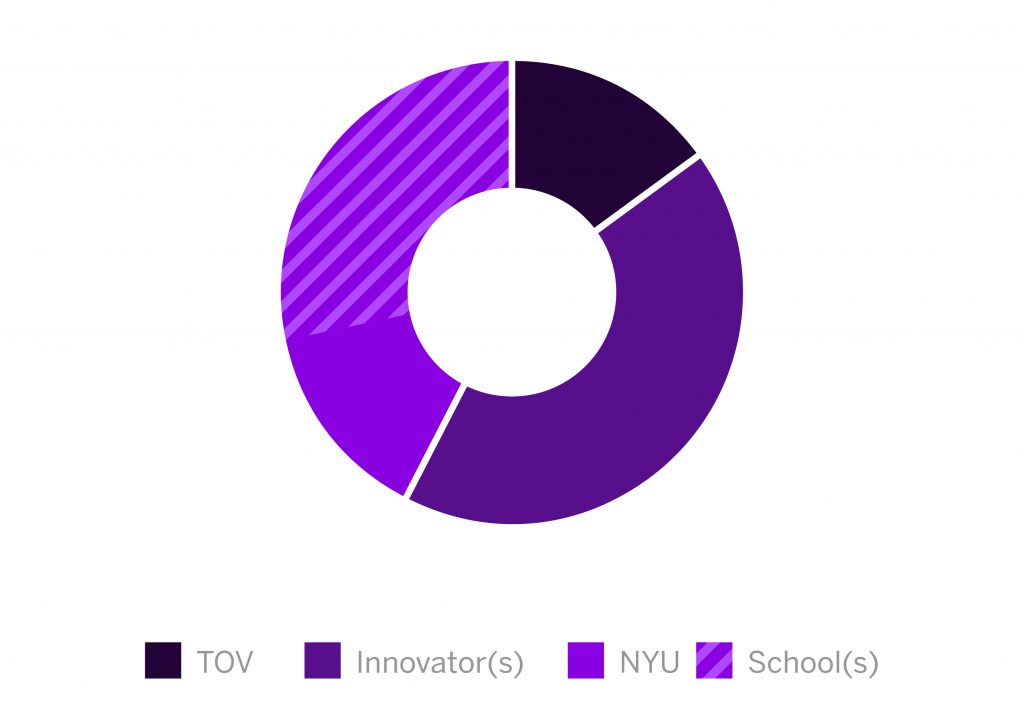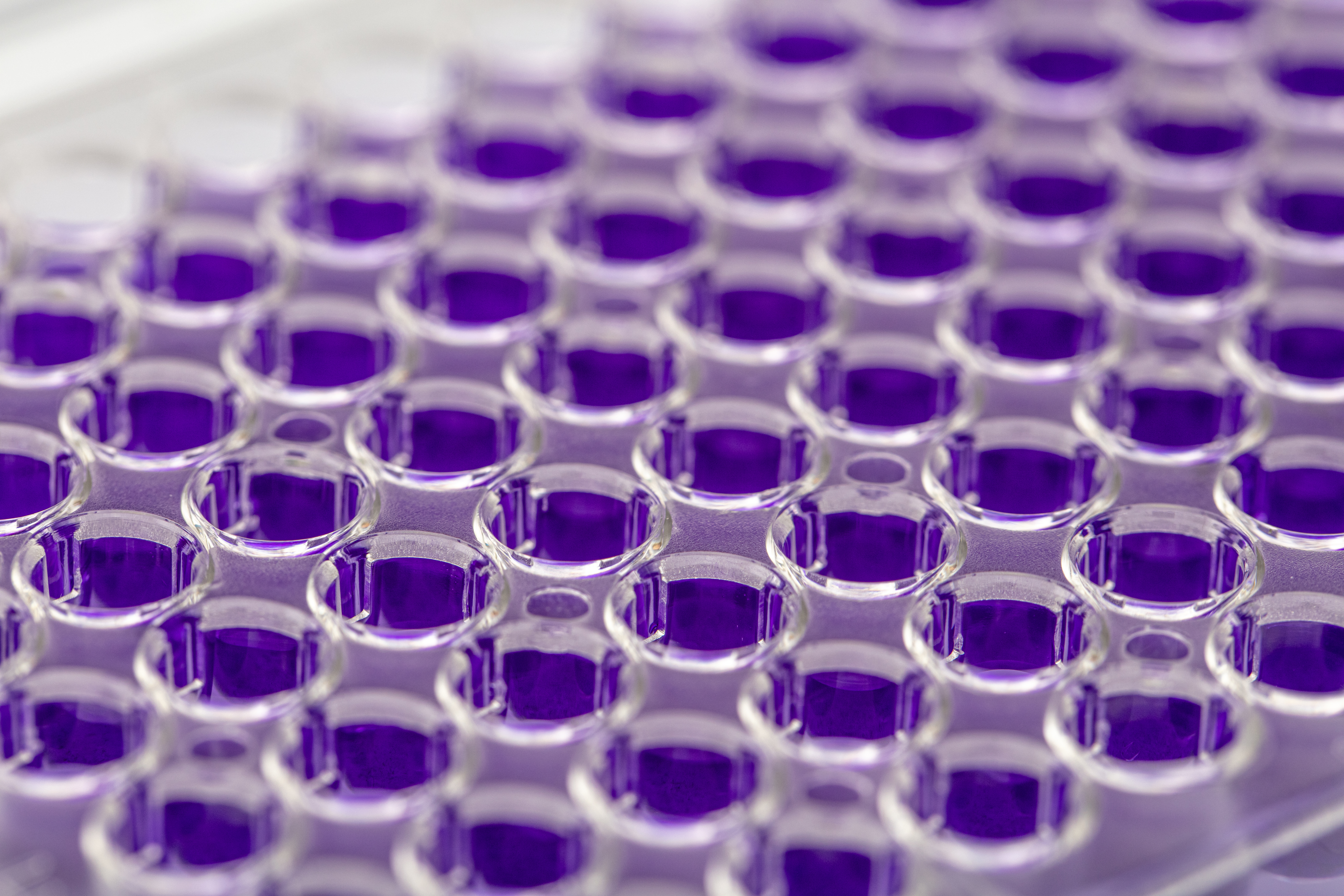
Disclose an Innovation
1. Disclose Intellectual Property
We encourage you to contact TOV early in the process to discuss your innovation, how to protect the intellectual property, and your thoughts about developing and commercializing the intellectual property either through a commercial partner or through the formation of a startup company.
Innovation Disclosure Form
The innovation disclosure form is a written notice to TOV that you have an innovation. It is a confidential document that should fully describe your innovation so that TOV can begin an assessment. If you are planning on presenting your innovation through publications, poster sessions, conferences, press releases, or other communication, you should disclose your innovation well beforehand. Publication prior to submitting a disclosure and TOV’s evaluation can significantly limit the commercial potential of your innovation.
2. Commercialization Assessment
The first activity on any new disclosure to TOV is the evaluation of the innovation and its suitability for commercialization. Since TOV is the steward of NYU-owned IP, this process is led by the business development managers assigned to the disclosures who are trained to examine new ideas for commercialization potential, including market evaluation and IP strategy development. Commercialization may result in licensing the innovation to an existing company or creating a new business.
3. Protect Intellectual Property
Protecting the rights of those who create IP is a high priority for TOV. Common IP protection methods include patents, copyrights, and trademarks, but could also include contractual use restrictions (e.g., for databases and materials). Formal IP protection may not always be possible or necessary, and the legal costs may outweigh the benefits. TOV will work with you to determine the best course of action.
Formal IP protection can be expensive, especially if the ideas are patentable and have a global market. TOV invests in the protection of IP with the assumption that the expenses will be reimbursed by an eventual licensee, including startup companies, so that the University can continue to invest in new ideas.
Only after your innovation is protected by a patent application is it safe to discuss publicly. If you would like to discuss your technology with those external to NYU before a patent application has been filed, you should first speak with TOV. You will have to ensure that the external company or individual signs a confidentiality agreement, consenting to keep your innovation in confidence before you engage in discussion. TOV will help you with this process. Note: This type of agreement may sometimes be referred to as a Non-Disclosure Agreement (NDA) or a Confidential Disclosure Agreement (CDA).
4. Marketing
Once a patent application is filed, TOV will seek commercial partners, which may include existing companies or entrepreneurs and investors that are interested in forming a startup. We will work in consultation with you to determine the best path forward.
Third-Party Licensee
Existing companies can offer infrastructure such as marketing channels, sector knowledge, facilities, commercial management, and an existing network.
Startup
A startup may offer greater commitment to the technology and has the potential to contribute to local economic development. The startup route also ensures that the entrepreneur’s commitment and energy drive the development of the technology.
In some instances, a startup may further develop the technology to demonstrate proof-of-concept, such as developing a prototype or early clinical trials, and then partner with or be acquired by a larger company that has greater resources to take the product to market.
5. Licensing
After there is agreement between NYU and a commercial partner on a desire to move forward, TOV will negotiate a license agreement granting the company rights to the technology. We look to be flexible in negotiating win-win agreements, which meet the needs of industry while preserving the core values of the University such as the right to publish. Our goal is to negotiate an agreement that provides a fair return to both parties.
Following the license agreement, innovators often have close ongoing collaborations with the company in their efforts to develop their technology. Innovators may be invited to perform research, consult, or serve on scientific advisory boards.
6. Commercialization
After a license agreement has been signed, the licensee continues the advancement of the innovation and makes other business investments to develop the product or service including research and development, regulatory approvals, sales and marketing support, training, etc. Innovators often have close ongoing collaborations with the licensee through relationships such as sponsored research, consulting, and serving on scientific advisory boards.
7. Revenue
Revenues generated from technology commercialization are shared with the innovators according to the intellectual property policies of NYU and NYU Langone Health, which are some of the most generous in the country, and the remainder is devoted to supporting the research activities of the University.
TOV manages the expenses and revenues associated with licensing agreements. Revenues from license fees, royalties, and equity (minus commercialization-related expenses such as unreimbursed patenting, marketing, and administrative costs) are shared as follows:
For NYU Langone Health Innovators:
15% of the net proceeds are distributed for the general support of TOV and to cover any other expenses associated with the commercialization of NYU Langone Health’s innovations.
The remaining net proceeds (85%) are distributed as follows:
- One-half (or 42.5% of the net proceeds) go to the innovator or innovators.
- One-half (or 42.5% of the net proceeds) to be used by NYU Langone Health for research, scholarship, educational, and clinical activities (or as otherwise required by law, regulation, or contract).
*If the innovators include individuals from NYU schools, colleges, or institutes outside of the School of Medicine, the distribution of the share attributable to those schools, colleges, or institutes will be as follows:- Two-thirds go to the applicable schools, colleges, or institutes in which the innovation was made.
- One-third goes to NYU.
For additional details, please see the Statement of Policy on Intellectual Property.

For NYU Innovators:
15% of the net proceeds are distributed for the general support of TOV and to cover any other expenses associated with the commercialization of NYU’s innovations.
The remaining net proceeds (85%) are distributed as follows:
- One-half (or 42.5% of the net proceeds) go to the innovator or innovators.
- One-half (or 42.5% of the net proceeds) to be used by NYU for research, scholarship, educational and clinical activities (or as otherwise required by law, regulation, or contract) in the following manner:
- Two-thirds will be distributed to the school or schools in which the innovation was made.
- One-third will be retained by NYU.
For additional details, please see the Statement of Policy on Intellectual Property.



